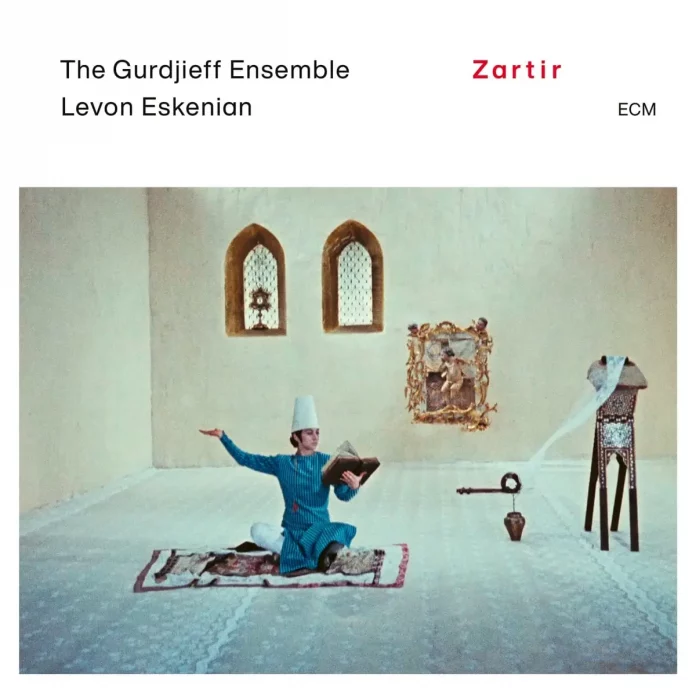This is the third ECM album devoted to music from the Gurdjieff Ensemble, following the 2008 recording Music Of Georges I. Gurdjieff and Komitas (2015). Earlier, Vassilis Tsabropoulos (p) and Anja Lechner (clo) had drawn inspiration from some pieces of Gurdjieff (c.1877-1949) for the improvisations they presented on the ECM album Chants, Hymns And Dances (2003). And long ago, one track from the present release, Prayer And Despair, featured on Keith Jarrett’s solo Sacred Hymns Of G. I. Gurdjieff. That 1980 ECM release offered many, including this writer, their first taste of the world of the Armenian philosopher and mystic, composer and spiritual and dance teacher.
So, beautifully recorded and packaged (with all texts presented in English) as this mesmeric meditative music is, what might a record like Zartir (Wake Up) have to offer a jazz sensibility? The question is best answered by attending to what long-time ECM associate Steve Lake has to say in his exhaustively researched and most instructive sleeve essay, where, among other things, he gives an overview of the issue of experiencing Gurdjieff’s music through the early piano transcriptions of Thomas de Hartmann and/or the ensemble approach taken here by Levon Eskenian.
Lake suggests that “Eskenian’s ensemble account of Prayer And Despair is both touching and strangely familiar. With the Keith Jarrett association in mind, this version almost feels like a time-travelling lost movement in Jarrett’s long-form composition [and 1976 album] The Survivors’ Suite, with a corresponding emotional dimension.” He continues “It’s not difficult to imagine Charlie Haden’s bass anchoring deep tones in its silences, or Dewey Redman, another improviser with a fondness for folk sonorities, on musette, or the subtle sound colorations of Paul Motian, percussionist of Armenian heritage.”
In any would-be classic definition of the word, this music is not jazz. But in the wider evolving sense of the word and the kind of intellectual, emotional and spiritual resonance and curiosity jazz continues to spawn, the music of Zartir will surely bring many a delight to many a jazz ear. Highly recommended.
Discography
Pythia; No. 10; Sayyid Chant And Dance No. 41; Introduction And Funeral Ceremony; Oriental Dance; Kankaravor Enker; Dard Mi Ani; Thirty Gestures; Prayer And Despair; Sayyid Chant And Dance No. 42; Ashkharhes Me Panjara E (The World Is A Window); Trembling Dervish; Zartir (Wake Up); The Great Prayer (55.26)
Eskenian (dir, arr); Vladimir Papikyan (v, santur, burvar, tmbuk, singing bowls); Emmanuel Hovhannisyan (duduk, pku); Mewri Vardanyan (kanon); Armen Ayvazjan (kamancha, cymbal); Gagik Hakobyan ( duduk); Norayr Gapojan (duduk, bass duduk, pku); Avag Margaryan (blut); Aram Nikoghosyan (oud); Astghik Snetsunts (kanon); Davit Avagyan (tar); Mesrop Khalatyan (dap, tmbuk, bells, triangle); Orestis Moustidis (tombak); National Chamber Choir of Armenia, dir. Robert Mikeyan. Yerevan, December 2021.
ECM 551 5436
















